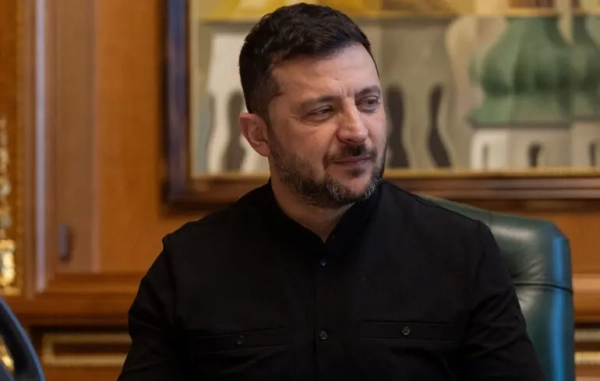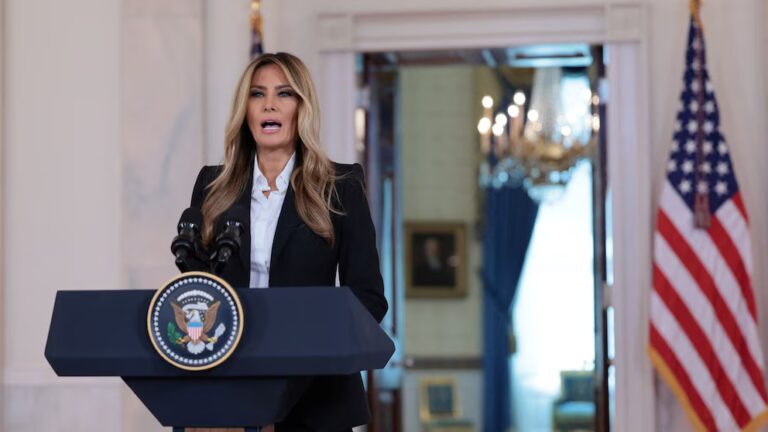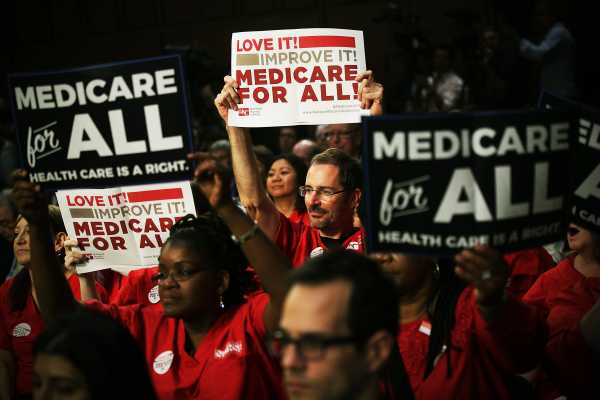
Democrats across the country are running on three simple words, recognizable to every American: Medicare for all.
“There’s no more popular brand in American politics than Medicare,” says Adam Green, executive director of the lefty Progressive Change Campaign Committee (PCCC). “Our hope is that Democrats wrap themselves in the flag of Medicare in 2018.”
In Democratic primaries around the country, Medicare-for-all candidates are winning — from Kara Eastman in Nebraska to Katie Porter in Orange County, California, to Alexandria Ocasio-Cortez in the Bronx, the message is resonating.
“The system we have, the status quo is not acceptable,” Porter told me when I covered her primary race in May. “We’re questioning whether we can rely on major players, like health insurance companies, to continue to be reliable partners in delivering health care.”
Even before these candidates started winning, polling was showing that Medicare-for-all is really popular: 62 percent of Americans liked the sound of it in last November. Almost every single rumored 2020 candidate in the Senate has backed Sen. Bernie Sanders’a Medicare-for-all bill. It’s clear the idea is in ascendancy among Democrats.
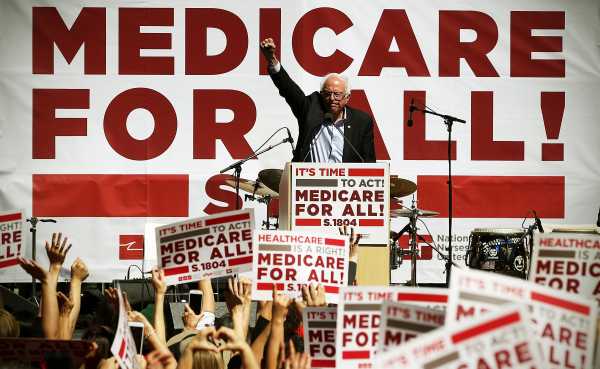
But someday, a reckoning will come. When Democrats hold power again — especially control of Congress and the White House — they will be expected to actually deliver on these Medicare-for-all promises. And when that day arrives, the party will have to decide whether they want to blow up America’s current health care system to build something new or figure out a less disruptive path, but risk falling short of truly universal coverage.
So even now, there is some jockeying among Democrats to define those three little words.
What does “Medicare-for-all” actually mean?
As popular as Medicare-for-all is, the slightly more vexing question is what it actually means.
Historically, Medicare-for-all has meant single-payer health insurance, a national government-run program that covered every American and replaced private coverage entirely, similar to the government-run health care programs in Canada and some European countries.
Then-Rep. John Conyers (D-MI) first introduced the Expanded and Improved Medicare for All Act in 2003. Conyers has since been disgraced by sexual harassment allegations but the idea lives on. It’s now sponsored by Rep. Keith Ellison (D-MN) and it is still a single-payer proposal. So is Sanders’s Medicare-for-all bill, a cornerstone of his unexpectedly resonant 2016 presidential campaign.
But these days, other plans are falling under the Medicare-for-all umbrella. Some progressives, like Green, are even comfortable with the term being applied to the various proposals to allow all Americans buy into Medicare. Some of those plans used to be branded as a “public option”; they would not end private insurance that more than half of Americans get, usually through work, as a true single-payer would. But these plans would also not provide the same guarantee of universal coverage that a single-payer system does.
“For anybody who supports Medicare-for-all single payer, what better way to debunk the right wing lies than to allow millions and millions of Americans to voluntarily opt into Medicare and love it?” Green told me in our interview. “As a political strategy, having Medicare-for-all be a broad umbrella where any candidate can embrace some version of it… that moves the center of gravity in the Democratic party.”
In 2018, with control of Congress at stake, nobody is taking up arms to insist that their version should be orthodoxy. What we know for certain is that Medicare-for-all is popular, and so Democrats of all stripes want to campaign on it. Governing comes later.
What does the public think about Medicare-for-all versus single-payer health care?
Ultimately, the direction the Democratic party goes in may have a lot to do with how far the public is willing to go.
One chart from the Kaiser Family Foundation, the gold standard for health policy polling, sums up why there is any debate at all about the meaning of Medicare-for-all.
Medicare-for-all gets nearly two-thirds support, but a “single-payer health insurance system” is a little more divisive: 48 percent have a positive reaction, and 32 percent have a negative reaction; the gap between favor and disfavor closes considerably. Medicare buy-ins poll the highest, with the support of three-fourths of Americans, including 6 out of 10 Republicans.
You could absolutely argue these numbers still seem pretty strong for single-payer described as such, given the conventional wisdom that such a plan is unworkable. But it is undoubtedly true that Medicare-for-all, as a slogan, is more popular — as are some of these more incremental policies, like giving people the option of buying into Medicare.
The “pleasant ambiguity” of Medicare-for-all, explained
Back in 2012, a group of progressive activists and Democratic lawmakers got together to talk about what they would do if the Supreme Court ruled the Affordable Care Act unconstitutional. That looked like a real possibility, and they agreed on a new campaign to keep pushing for universal health care.
Democrats planned to run on a platform of Medicare-for-all if the Court struck the law down. At that point, the Conyers single-payer bill had been around for nearly a decade, but the PCCC’s Green says that on that day and in that room, some people heard Medicare-for-all and thought of a single-payer system. Yet others heard the same thing and thought of something that looks more like a public option. From his perspective, those different ideas aren’t a problem.
“There is a pleasant ambiguity and more of a north star goal nature around Medicare-for-all,” Green said. “This really does not need to be a huge intra-party battle. Why get in the weeds during the campaign?”
Voters themselves seem to like the sound of Medicare-for-all, even if they themselves don’t always agree on what it means. BuzzFeed’s Molly Hensley-Clancy reported on this phenomenon while covering Eastman’s campaign in Nebraska ahead of the May primary:
We heard similar ambiguity when Vox conducted some focus groups with Hillary Clinton voters in suburban Washington last fall. Those voters, particularly the ones who currently had their own insurance through work, liked the idea of having a choice, having an option. They also liked the sound of Medicare-for-all, but a top-to-bottom overhaul of the American health care system made them nervous.
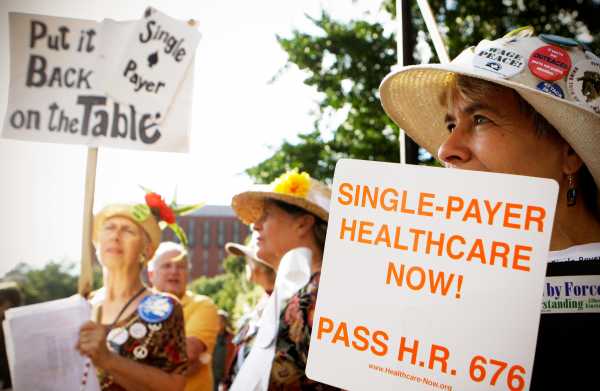
“To me, [single-payer] sounds like it’s somehow complete overhaul of everything, whereas Medicare-for-all sounds like warming people up to the idea using the structure that’s already in place to deliver that care,” Dennis, a 34-year-old Hillary Clinton voter in Bethesda, told us.
One of the things that made Democrats the most nervous about single payer is how political health care has become. They see how Trump has attacked Obamacare, and they see future Republican administrations meddling with single-payer health care as a real possibility. That could be a sticking point for some Democratic voters, especially those who are better off and already get good insurance through work.
Medicare-for-all is uniting Democrats for now — but it could divide them later
That explains why there’s this fledgling competition over what Medicare-for-all is really describing.
The best example might be the health care plan from the Center of American Progress, which is, tellingly, called “Medicare Extra For All.” It’s a seriously ambitious plan, one that would achieve universal coverage through a combination of government plans and private insurance, while preserving employer-based insurance for those who want it. But it is not single payer. And it is notably produced by an organization closely aligned with the Democratic establishment.
“To the extent there will be moments where we have to bring clarity to what Medicare-for-all means for us on the progressive side of the house, compared to other people who want to dance around the issue, we will do that,” Nina Turner, who leads the Sanders-affiliated Our Revolution, told me. “For us, at Our Revolution, it is Medicare for all, the whole thing, for everybody in this country.”
The scars from the Obamacare reveal themselves in this debate. For all the health care law has achieved, it also showed the limits of incrementalism. Even Medicaid expansion, the closest thing the law had to a single-payer pilot, was undermined by the Supreme Court by allowing Republican-led states to refuse it. The Obamacare insurance markets have been susceptible to sabotage from Republicans in Congress and the Trump administration.
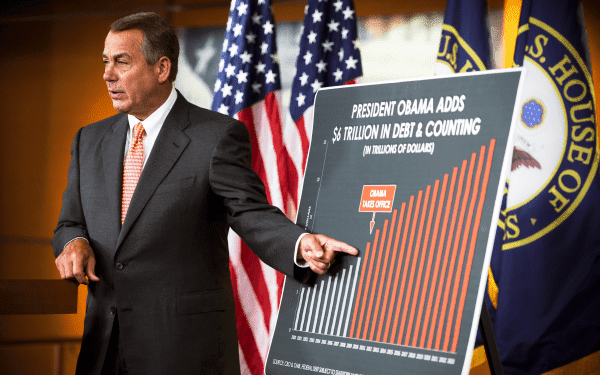
Yes, the uninsured rate has reached historic lows under Obamacare, but 10 percent of Americans still lack coverage. Democrats will be faced again, at some point, with a choice between a more incremental approach, like the Medicare public options introduced by some Democrats in Congress, or a sweeping overhaul like single-payer. They can put it off for a while and campaign, as Green suggests, on whatever Medicare-for-all means to voters. But eventually that debate will need to be had.
Its outcome is far from certain. Eastman, one of Medicare-for-all’s most notable champions so far in 2018, described the dilemma perfectly.
She unambiguously supports single-payer Medicare-for-all. But “with the current Congress, with the current president, is that feasible?” she said. “I think you have to be practical about what’s happening in our country.”
Yet even if she recognizes the political realities of the moment, she wants Democrats to be bolder in their agenda.
“We have to stop backing off from this issue,” Eastman said. “That’s one of the problems with the ACA. It didn’t go far enough.”
Sourse: vox.com
